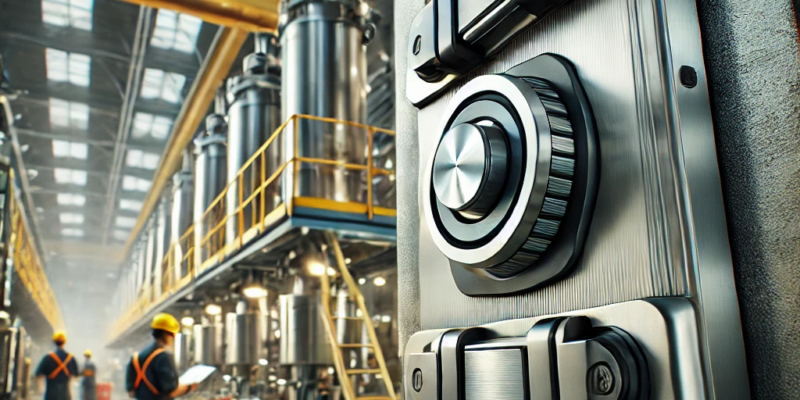Magnetic latches have become a go-to fastening solution in industrial environments, thanks to their durability, ease of use, and low maintenance requirements. However, like any component exposed to heavy use and harsh conditions, they still benefit from routine inspection and simple upkeep to ensure they function reliably over time.
In industries where uptime, safety, and operational efficiency are paramount, proper maintenance of magnetic latches can prevent unexpected failures, extend service life, and maintain peak performance. Here’s a guide to best practices for maintaining and inspecting magnetic latches in industrial settings.
1. Regular Visual Inspections
Routine visual inspections are the first line of defense against latch issues. Workers or maintenance crews should inspect magnetic latches at scheduled intervals to check for:
- Physical damage (cracks, dents, deformation)
- Corrosion or rust on the latch housing or magnet surface
- Debris buildup such as dust, grease, or metal shavings
- Alignment issues between the latch and strike plate
🔹 Best Tip: Perform inspections during regular maintenance shutdowns or equipment checks to avoid unscheduled downtime.
2. Cleaning for Optimal Performance
Dirt, dust, grease, or other contaminants can weaken the magnetic force by preventing full surface contact. Periodic cleaning ensures that the latch maintains strong holding power.
Cleaning Steps:
- Wipe the magnetic surfaces with a clean, dry cloth or a slightly damp cloth if necessary.
- Use mild, non-abrasive cleaners for tougher grime — avoid harsh chemicals that could damage coatings.
- Dry thoroughly after cleaning, especially in humid or washdown environments.
🔹 Best Tip: In food processing or medical settings, ensure cleaning agents used are compatible with stainless steel or any coatings on the magnet.
3. Monitoring Magnetic Strength Over Time
While magnets are generally long-lasting, extreme conditions (e.g., very high temperatures, strong mechanical shocks) can reduce magnetic strength over time. During inspections:
- Check holding force manually (ensure the latch closes firmly and stays secure).
- Use a pull-force gauge if precision testing is necessary, especially in critical safety-related applications.
If significant loss of magnetic strength is detected, the latch should be replaced to maintain operational integrity.
🔹 Best Tip: Keep a reference sample of a new latch on hand to compare performance during routine checks.
4. Preventing Physical Damage
Magnetic latches are robust but can be damaged by improper use, such as:
- Slamming doors or panels with excessive force
- Misalignment during repeated operations
- Using them beyond their specified holding force rating
Ensure workers are trained to operate equipment properly and to avoid overstressing the magnetic systems.
🔹 Best Tip: Choose magnetic latches with a slight mechanical buffer (such as a built-in spring mechanism) for high-impact environments.
5. Replacing Worn or Damaged Components Promptly
If a latch shows visible wear, reduced holding power, or misalignment that cannot be corrected, it should be replaced immediately. Delaying replacement can compromise safety, cause downtime, or lead to additional damage to doors, panels, or machinery.
🔹 Best Tip: Maintain a small inventory of critical spare magnetic latches to minimize equipment downtime when replacements are needed.
Conclusion
By following simple, proactive maintenance practices, industrial operations can ensure that magnetic latches continue to deliver reliable, efficient, and safe performance.
Routine inspections, careful cleaning, force monitoring, and proper usage training all contribute to maximizing the lifespan of magnetic latching systems — ultimately saving time, reducing costs, and keeping operations running smoothly.
In high-demand industrial settings, well-maintained magnetic latches aren’t just a convenience — they’re a strategic asset for operational excellence. 🚀

Comments